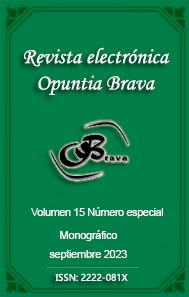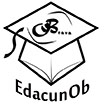Prospecting of plant species and traditions in the communities to enhance the environmental dimension in Agronomy students
Keywords:
prospecting, biological diversity, traditions, communityAbstract
Biological and cultural diversity in communities is a recurring theme in recent times. Hence, aspects related to genetic and cultural heritage need to be addressed by different media, including teachers and researchers, with the purpose of rescuing plant species that, due to the influence of climatological or other factors, disappear from their habitats or are reduced, thus endangering their existence. In the same way, traditions that have been passed from generation to generation are lost and preserving them allows not only to preserve the historical memory of the place, but also to contribute to its enrichment. In this sense, Martí was also aware of the riches of the earth and the diversity that inhabits it, he gave natural resources supreme importance and this is evident in phrases and writings that place nature at the center of the activity of man's life. The objective of this article is to identify existing species and traditions, based on a prospection mission assigned to Agronomy students of the University of Las Tunas, in communities of the province. The work in the communities generates solutions to accumulated social problems and allows the development of actions that contribute to the transformation of the environment, and from that space, with the available human and material resources, to seek alternatives for food production, which contribute to sustainable development and biological conservation.
Downloads
References
Constitución de la República (2022). La Habana: Gaceta Oficial de la República de Cuba.
Cuba. Ministerio de Ciencia, Tecnología y Medo Ambiente (Citma, 2015). Estrategia Ambiental Nacional 2011/2015. La Habana: Autor.
Diccionario de la lengua española (2022). Recuperado de https://dle.rae.es
Engels, F. 1876). El papel del trabajo en la transformación del mono en hombre. En Obras escogidas en tres tomos, t. III (p. 70).
Esquinas-Alcázar, J. (2001). Poniendo los recursos fitogenéticos y sus beneficios al alcance de todos. Roma: FAO. Recuperado de http://www.fao.org/noticias/2001/011005-s.htm
Martí, J. (1975a). Obras completas, t. 8. La Habana: Ciencias Sociales.
Martí, J. (1975b). Obras completas, t. 5. La Habana: Ciencias Sociales.
Martí, J. (1975c). Obras completas, t. 19. La Habana: Ciencias Sociales.
Núñez, J. (1999). La ciencia y la tecnología como procesos sociales. Lo que la educación científica no debería olvidar. Recuperado de https://www.researchgate.net/publication/328413184_LA_CIENCIA_Y_LA_TECNOLOGIA_COMO_PROCESOS_SOCIALES_Lo_que_la_educacion_cientifica_no_deberia_olvidar
Toral, O. C., Navarro, M. y Reino, J. (2015). Prospección y colecta de especies de interés agropecuario en dos provincias cubanas. Forrajes, 38(3), jul.-sept.








.png)



.png)





















